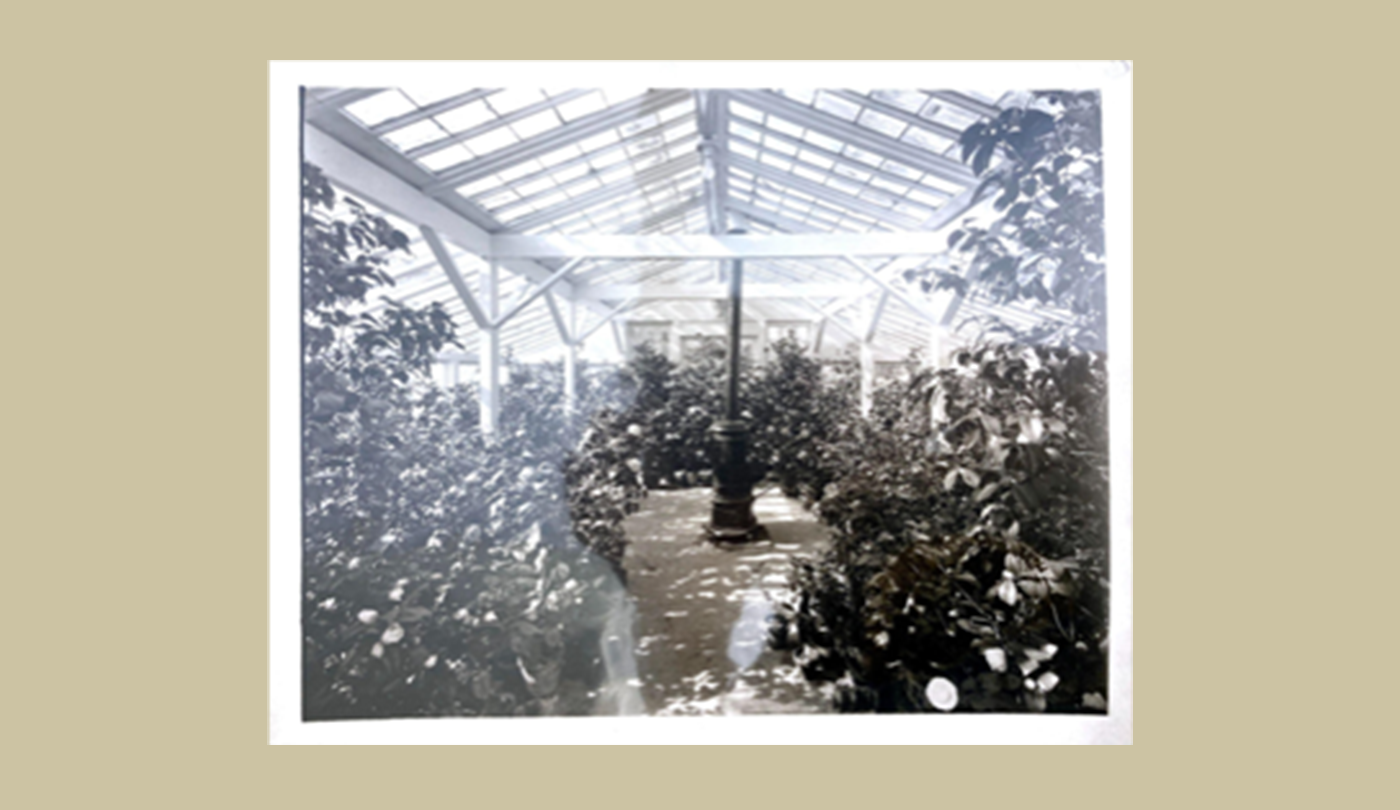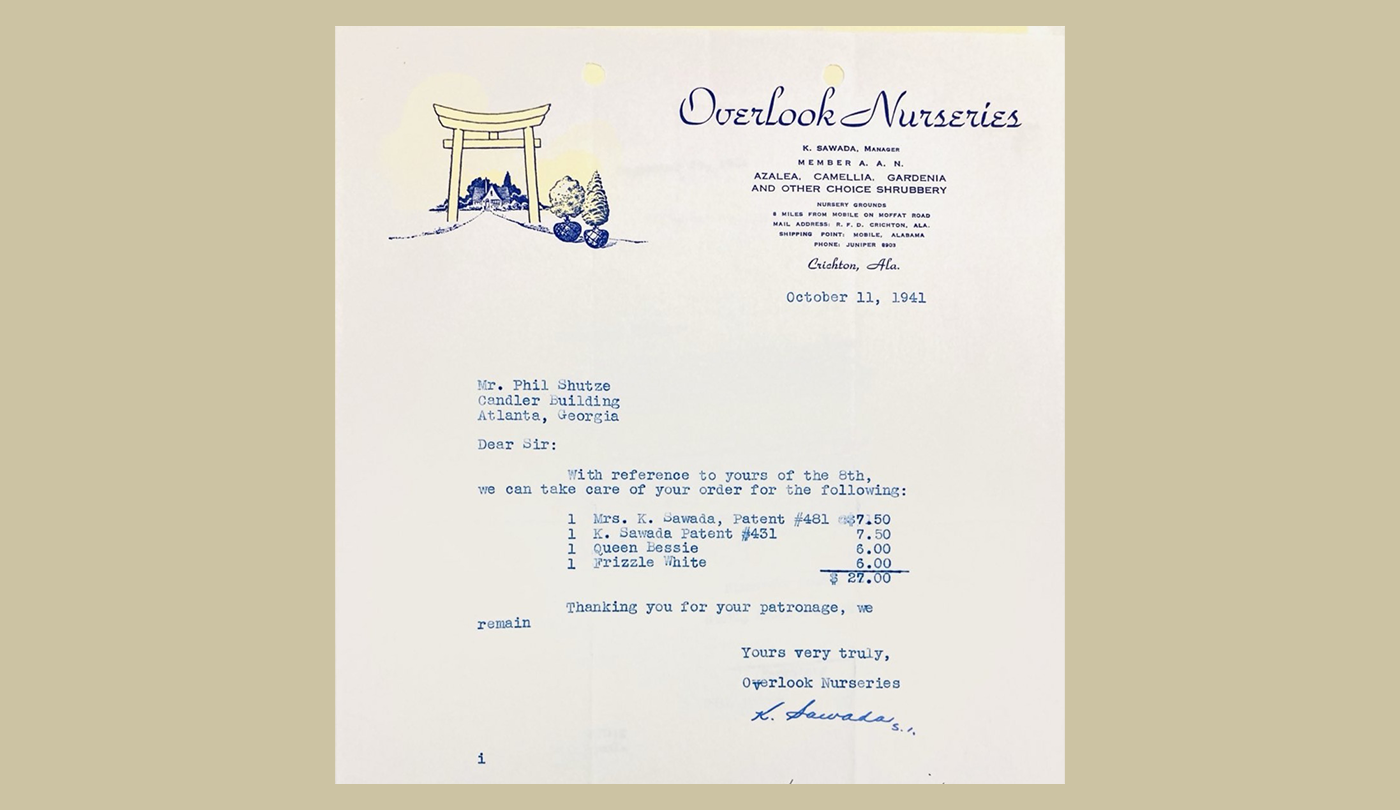Camellias are a remarkable flowering plant–not only for their beauty and endless flower variations–but also because they draw us into the detailed and diverse world of camellia cultivators.
One such camellia lover was Swan House architect Philip T. Shutze, who was well known for his skilled adaptation of classical European architecture into the South, but much less for his horticultural habits. We have been digging through the Shutze archives at Kenan Research Center to look at the varieties–mostly Camellia japonica–(he started collecting in the 1930s) as part of our new camellia collection project. The archive is full of plans for his greenhouse, magazine clippings highlighting his work, awards and pamphlets from local camellia shows, and correspondence with camellia growers from as close as South Carolina and as far as Italy.
Shutze purchased camellias from notable Japanese-American plantsman, Kosaku Sawada, whose labor and love of camellias represented a major contribution to the horticultural world. Sawada immigrated to the United States from Osaka, Japan in 1906, and after several years of working on a rice farm in Texas, opened Overlook Nurseries, in Mobile, Alabama. Here he grew camellias from seed that his wife brought from Japan, sold azaleas and other ornamental plants, and bred new camellia hybrids. Remarkably, Overlook Nurseries survived World War II, despite almost being confiscated amidst anti-Japanese sentiment.
Overlook and other nurseries in the region were part of a burgeoning camellia revival in the Southeast in the early to mid-20th century. This interest has been sustained by networks of home gardeners, plantspeople, and society members, and we now see camellias grown as a common landscape plant across Atlanta. In the Rhododendron Garden, we have planted some of these more modern cultivars that connect to different figures and growers in our region.

Camellia japonica ‘Derbyana’ blooming this winter at Swan House.
We are also building our collection of antique cultivars that tell the story of how camellias were first grown in the Southeast. While camellias are native to Asia, it was cultural exchange between European botanists such as André Michaux and plantation owners at Middleton Place and Magnolia Plantation who originally brought camellias to South Carolina. These gardens and horticultural collections were a display of wealth and beauty; a colonial landscape project that spanned the Atlantic. However, much of the skill, knowledge, and creativity that made these beautiful gardens successful can be attributed to the enslaved Africans who were forced to care for these spaces. These enslaved gardeners were incredibly knowledgeable horticulturists, botanists, and landscape architects, whose stories are only just now beginning to be highlighted in horticulture. If you’d like to learn more check out Abra Lee’s recent interview on Cultivating Place with Sidney Frazier, Vice President of Horticulture at Middleton Place where he oversees care for over 10,000 camellias.
With a generous donation of camellias from the North Georgia Camellia Society and a grant from the Cherokee Garden Club, our team has planted out several varieties that Shutze collected, including three white-flowered K. Sawada introductions, as well as several varieties originating at Magnolia Gardens.



